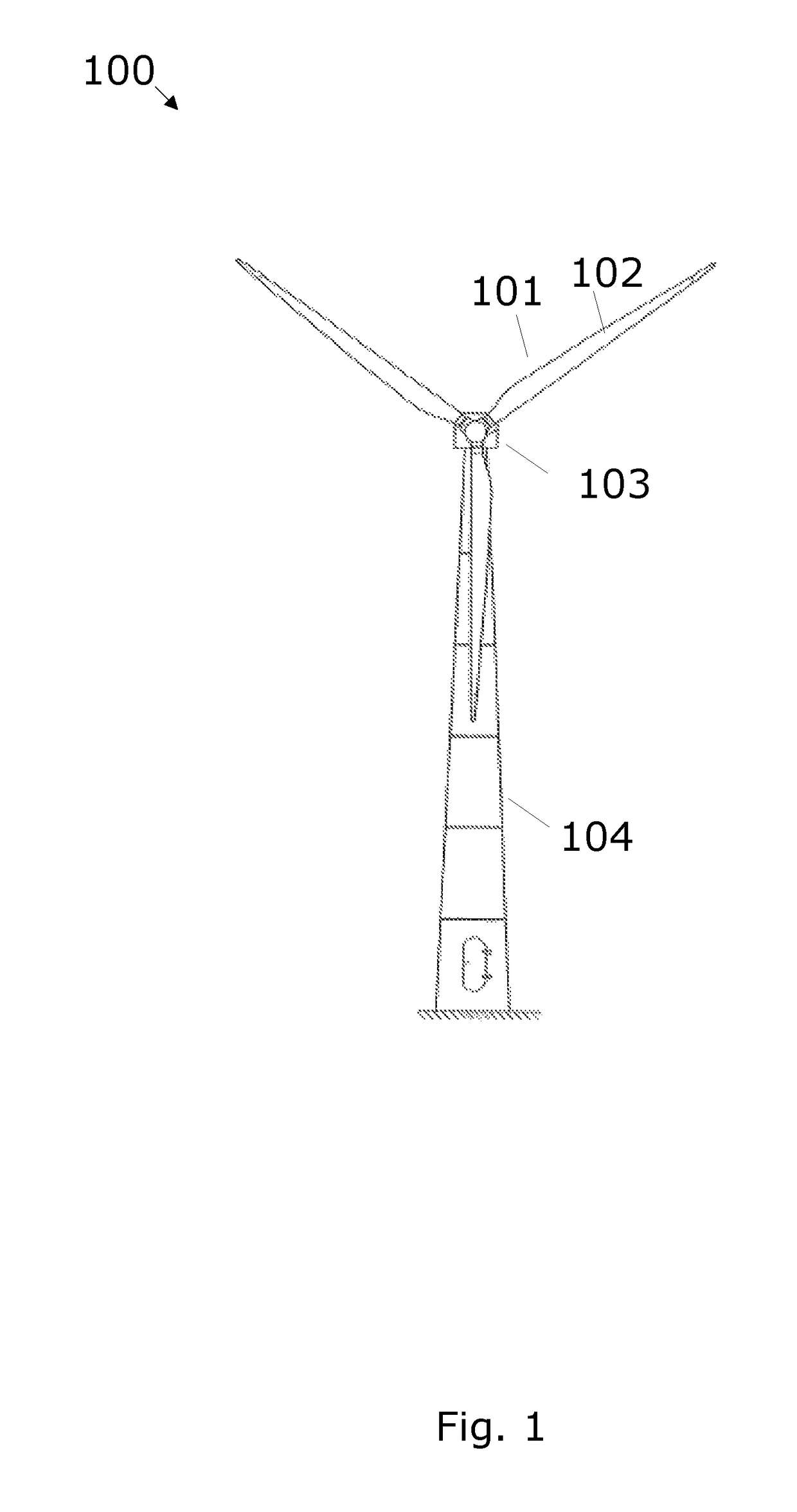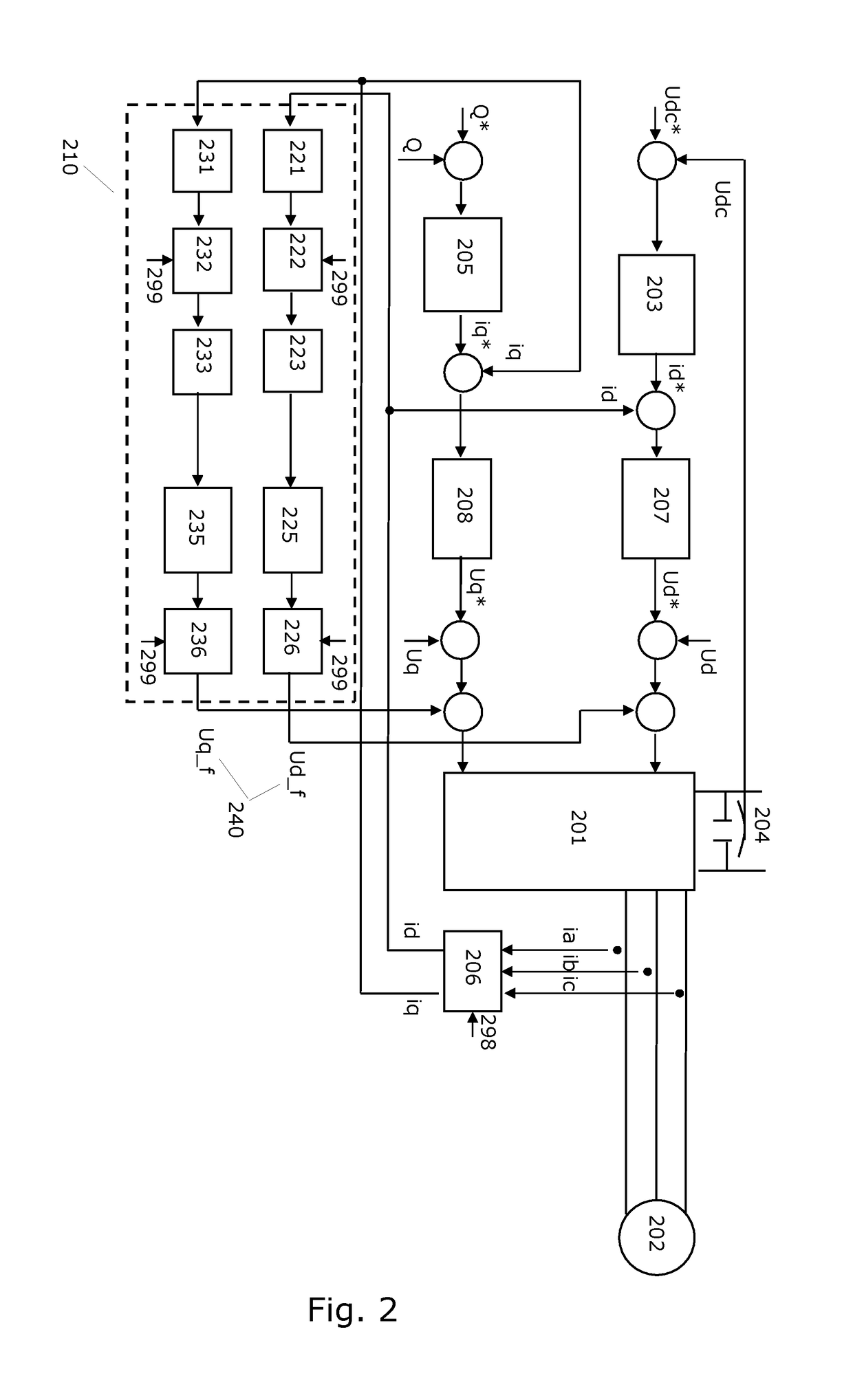Compensating electrical harmonics on the electrical grid
a technology of electrical harmonics and electrical grids, applied in the direction of reducing harmonics/ripples in the ac network, reactive power adjustment/elimination/compensation, single network parallel feeding arrangement, etc., can solve the problem of harmonic distortion on the grid, harmonic distortion may be particularly generated, and the cost of passive filters is high and requires a relatively large spa
- Summary
- Abstract
- Description
- Claims
- Application Information
AI Technical Summary
Benefits of technology
Problems solved by technology
Method used
Image
Examples
Embodiment Construction
[0042]FIG. 1 shows a wind turbine generator 100, hereafter also referred to as a WTG. The WTG 100 includes a rotor 101 for driving a shaft coupled to a power generator for generation of electric power from the wind driven rotor 101. A gearbox may connect a shaft of the rotor 101 to a shaft of the generator. Output power from the generator may be converted by a power converter, e.g. in frequency, before being supplied to a utility grid (electrical grid). The power converter includes an AC-to-DC converter and a DC-to-AC converter, the latter is referred to as an inverter 201 (see FIG. 2). The gear box, the generator and / or the power converter may be located in a nacelle 103. The nacelle 103 and rotor 101 is located on top of a tower 104. The WTG further includes a control system for controlling the inverter's 201 injection of active and reactive current to the utility grid and a harmonic compensator 210 for generating control input signals for the inverter so that the current injected...
PUM
 Login to View More
Login to View More Abstract
Description
Claims
Application Information
 Login to View More
Login to View More - R&D
- Intellectual Property
- Life Sciences
- Materials
- Tech Scout
- Unparalleled Data Quality
- Higher Quality Content
- 60% Fewer Hallucinations
Browse by: Latest US Patents, China's latest patents, Technical Efficacy Thesaurus, Application Domain, Technology Topic, Popular Technical Reports.
© 2025 PatSnap. All rights reserved.Legal|Privacy policy|Modern Slavery Act Transparency Statement|Sitemap|About US| Contact US: help@patsnap.com



